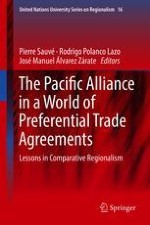2019 | OriginalPaper | Chapter
9. The International Investment Agreements of the Pacific Alliance Members and Their Relationship of “Coexistence” with Chapter 10 of the Pacific Alliance Additional Protocol
Author : Victor Saco
Published in: The Pacific Alliance in a World of Preferential Trade Agreements
Publisher: Springer International Publishing
Activate our intelligent search to find suitable subject content or patents.
Select sections of text to find matching patents with Artificial Intelligence. powered by
Select sections of text to find additional relevant content using AI-assisted search. powered by
